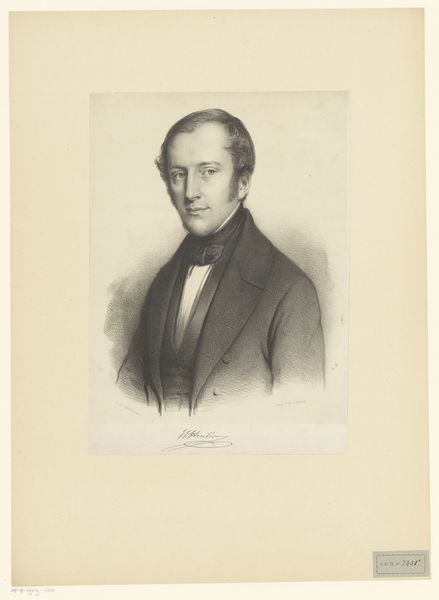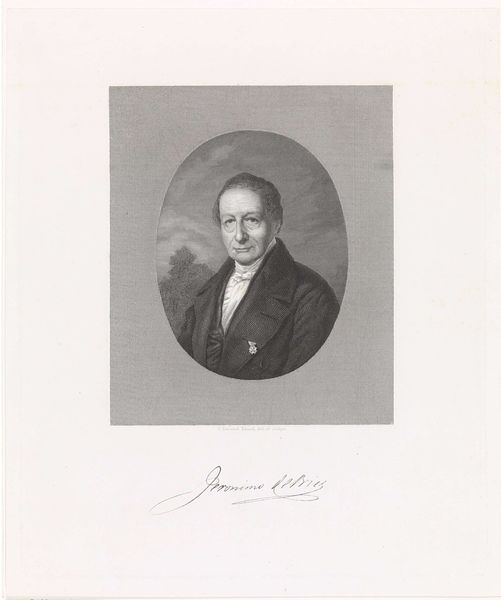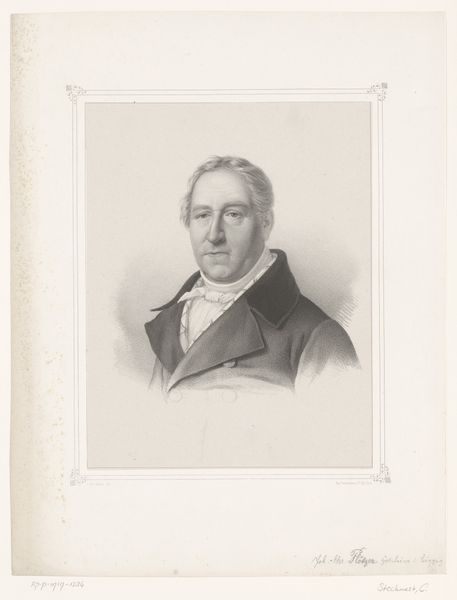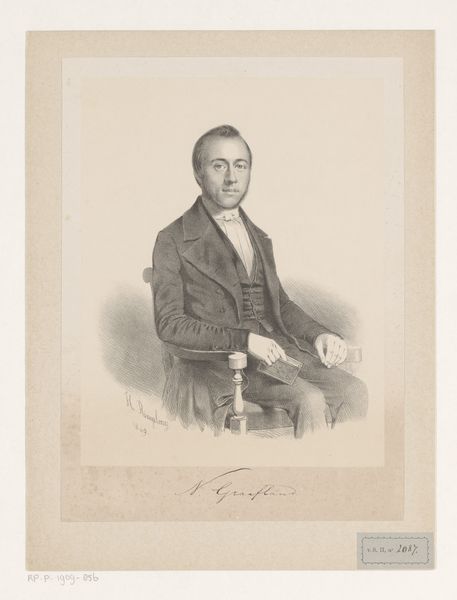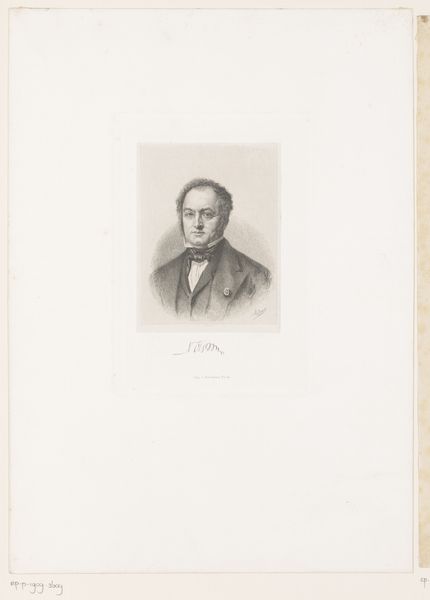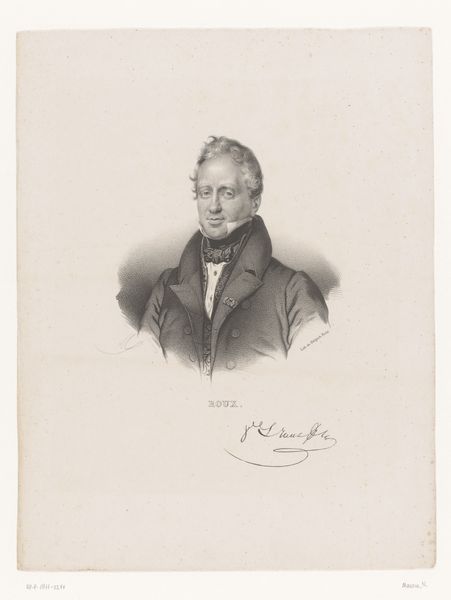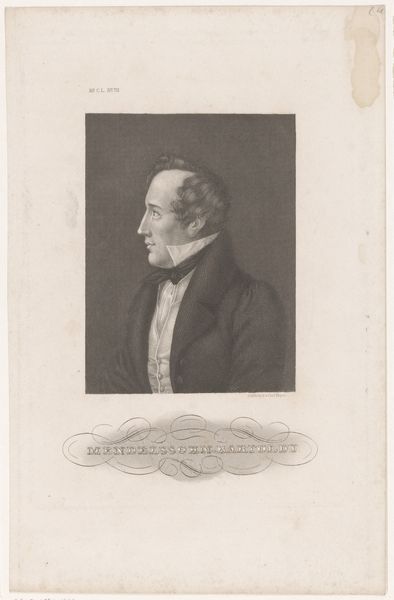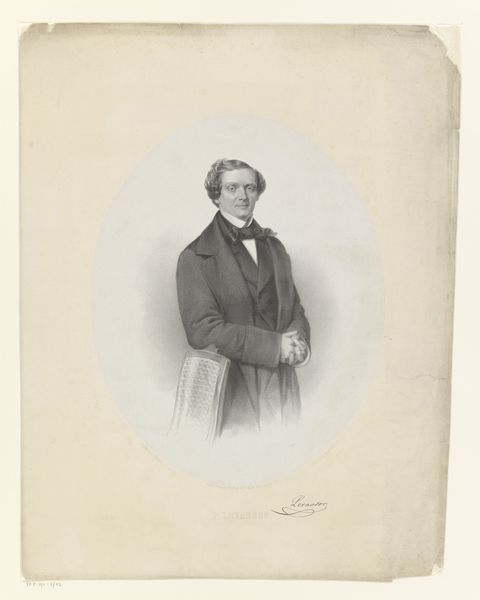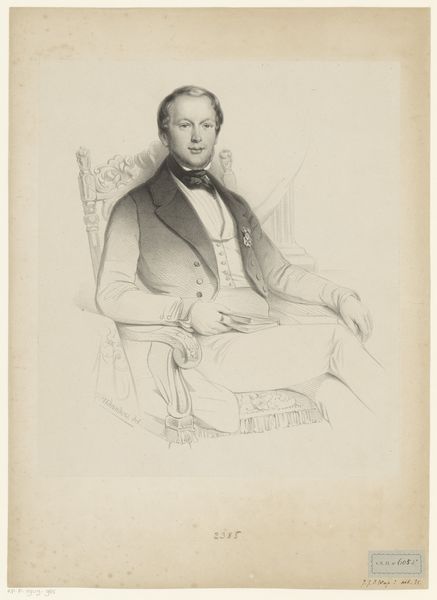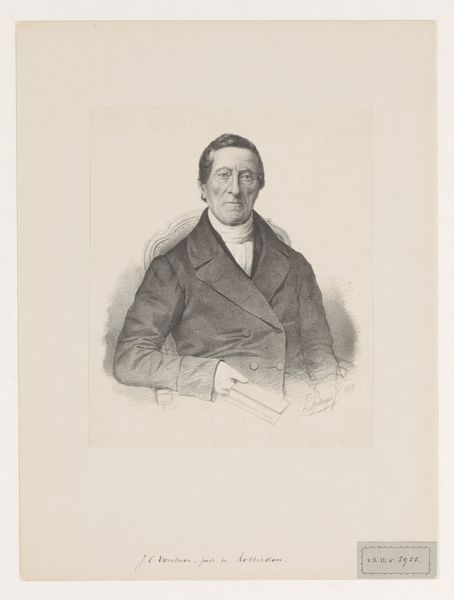
Dimensions: height 400 mm, width 285 mm
Copyright: Rijks Museum: Open Domain
Editor: Here we have Hendrik Ringeling’s "Portret van Combertus Willem van der Pot" created in 1853 using pencil. It has this quiet, almost contemplative feel, like catching a moment in history. What draws your eye when you look at this portrait? Curator: It is fascinating how portraits freeze a subject in time. Consider the hand holding a writing instrument – is it merely a prop, or does it suggest the sitter’s intellectual pursuits, their participation in shaping the discourse of their time? A subtle statement of power through intellect. What do you think the gaze communicates? Editor: He looks very composed. Almost…clinical? But that could just be my 21st-century reading of it. Do you think viewers back then would have seen the same thing? Curator: That's a valid interpretation. Consider how different clothing styles represented professional and political allegiances. How would a contemporary viewer interpret his jacket, for example? What does it communicate to you, regardless of the intent of the sitter? Editor: I see order and structure; someone in a position of authority, maybe? The precision of the lines gives off a sense of control and maybe…optimism? Curator: Yes, perhaps an air of restrained optimism is conveyed. Ringeling captured more than a likeness; it's an intersection of personal identity and social symbolism. What does that signature beneath the image add to our understanding? Editor: It feels very…ceremonial. Like the portrait isn't complete until the name is officially there. That is a pretty cool thing. Curator: It is another layer of symbolic resonance. We often separate the image from the man, but the name connects it all, reaffirming not only the existence but also the legacy. Editor: So true. Looking at the art as a symbol, as an idea. Thanks for broadening my perspective on that!
Comments
No comments
Be the first to comment and join the conversation on the ultimate creative platform.


